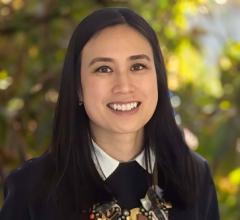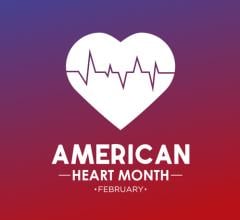
Christine E. Seidman, MD, FACC, offered key insights into the evolution of her scientific research into hypertrophic cardiomyopathy, and the value of mentorship in a “One on One” discussion and video series with DAIC.
October 11, 2023 — To gain the latest insight into genetic research for the treatment of hypertrophic cardiomyopathy, DAIC's Managing Editor conducted an in-depth interview with by Christine E. Seidman, MD, FACC, on the evolution of her scientific research, its impact, and the mutual benefit of mentoring. A summary of that discussion follows.
Dr. Seidman is the co-director of the Seidman Lab at Harvard Medical School, named for her and her husband (Jonathan G. Seidman). The Lab conducts genetic research into diseases, especially genetic disease related to the heart. Seidman is the Thomas W. Smith Professor of Medicine and Genetics in the department of genetics at Harvard Medical School, and professor of cardiovascular medicine at Brigham and Women’s Hospital, where she is Director of the Cardiovascular Genetics Center. She is an investigator of the Howard Hughes Medical Institute and a member of the affiliate staff at Boston Children’s Hospital and the Dana Farber Cancer Institute.
Seidman has received two prestigious awards in the past year: American College of Cardiology (ACC) Valentin Fuster Award for Innovation in Science; and the American Heart Association (AHA) Research Achievement Award, among multiple other over the years for her commitment to cardiovascular health and genetic research.
DAIC: What should we know now about your research and discoveries?
Seidman: I think the most important thing that our work has contributed has been to really delve into a particular heart muscle disorder called hypertrophic cardiomyopathy.
When I was in training, I was fascinated with the clinical manifestations of this disease that really expanded my opportunities to think about ways to better diagnose, initially, the disorder. And that's because, unfortunately, hypertrophic cardiomyopathy, sometimes presented with devastating events such as sudden cardiac death, young people who presented with heart failure, and with lots and lots of symptoms. And yet, while we recognize this as having a heart problem, we had no understanding of the etiology for it, let alone the mechanisms that arose from whatever was driving this disease. And so in the beginning, it was really an exploration into what was called an idiopathic disorder.
I’d had the great pleasure of training at Johns Hopkins, in internal medicine, where Dr. Victor McKusick was exploring how human genetics really were drivers of many different types of heart diseases. And taking my cue from him, we began recognizing…that while a patient might present at the hospital with hypertrophic cardiomyopathy, that they had family members who also had asymptomatic disease which could be clinically identified with a simple echocardiogram.
That then paved the understanding that while we again saw one patient, there was a family, and therefore a genetic disorder, which was probably the likely cause of this condition. Over the next many years, we set about looking at families literally around the country, making house calls, and truly, ultimately around the world, having them referred to us, so that we could characterize how many people in a family, what the nature of their manifestations were, and their longitudinal course of disease. And we learned an incredible amount from those patients from their lived histories and the devastating consequences that some of those patients experience.
From that information, we then could begin to not only have a natural history of disease, but as well have the opportunity to have a blood sample, and with that blood sample to begin some unbiased genomic analyses. And what I mean by that was, we literally made DNA from hundreds of people who were related, as first degree and second degree family members. We then tracked DNA patterns. That allowed us to understand that there was a pattern originating from a series of different chromosomes, where there was probably a mutation in one gene.
DAIC: What's next? What are you most excited about with this work?
Seidman: There's still so much more to do. We know what the drug is able to do in a subset of patients, those with outflow tract obstruction. But we also know there are many patients who don't fulfill current guidelines set by the FDA for getting this medication. Many patients have hypertrophy without a substantial gradient, but they still have lots of symptoms, because those arise from poor relaxation capacity. We'd love to see this drug have an effect in helping those patients to have normal relaxation capacity, and therefore benefit the chances of not having the progression to heart failure, the development of atrial fibrillation. Those are clinical trials that are ongoing, and it remains to be seen whether in fact that efficacy will also be beneficial in that group of patients.
We also, however, know that there are opportunities beyond simply treating someone with these medications for a long period of time. And I think in this time and place in basic fundamental research, a lot of us are beginning to think not just about treatment, but about cures.
When one has a genetic disorder that arises from a single change in a single nucleotide in a single gene, it's very appealing to think about whether there will be future opportunities to directly correct that condition. And the ongoing work in our laboratory and many others is to see if there are strategies that we could do not just patient by patient, but for groups of patients with particularly devastating diseases — such as those who really have progressive, debilitating hypertrophic cardiomyopathy. If we can harness nucleic acid therapies, and be able to deliver them in that quiescent period of time, before the disease has really even emerged, I think, then we might have the opportunity to think about lasting cures. That's a long way in the future from a practical delivery point of view. But it's an incredibly exciting time of research, because those are tools we have only had in recent times. And there's great need for a lot more research in this endeavor.
DAIC: What might you say to those just starting, or considering taking on, the type of scientific research that you have?
Seidman: I applaud all researchers, be they at the more clinical realm or at the more basic bench realm, because it does take a village. It takes the integration of the knowledge that comes from deep understanding of patience and understanding of which patients will and will not benefit when one moves experimental drugs into therapies. It also takes people at the bench willing to take risks, willing to fail, and willing to get up tomorrow morning and try again, with perhaps a different strategy.
We have benefited enormously from the great activity of young people in our laboratory, men and women. Research is a great opportunity to explore what you like to do to use your hands, as we cardiologists like to do in the invasive space, as well as at the bench, and to really find a way to make a difference for patients. I think most of us remain highly, highly motivated to help our patients to achieve a better life in terms of health, and certainty so that they can do things they might now feel unable to because of debilitating diseases. They are our partners in this work. Those patients and family members who have contributed have given so much. And I know our young doctors and trainees who get to talk with them and meet them are motivated because of those interactions…and they motivate we ‘senior people’ as well. So it's a great community, it's a lot of fun, and we welcome people to come join in any way or capacity that they feel motivated.
Watch the complete 3-part video series on www.dicardiology.com/videos
Related Hypertrophic Cardiomyopathy content:
Part 1: Hypertrophic Cardiomyopathy: One on One with a Cardiovascular Research Leader


 May 02, 2025
May 02, 2025 








